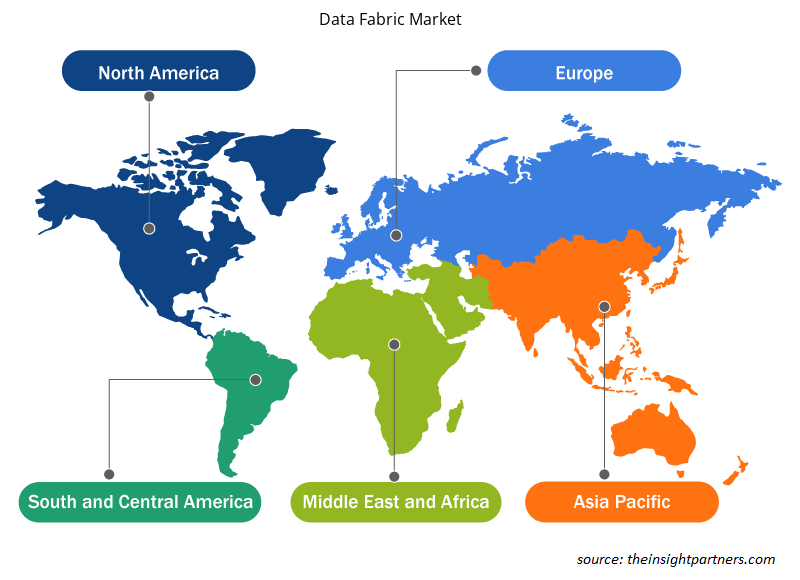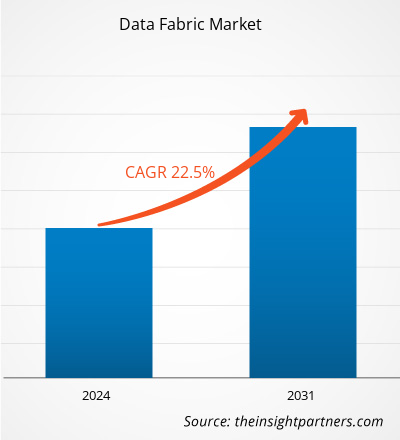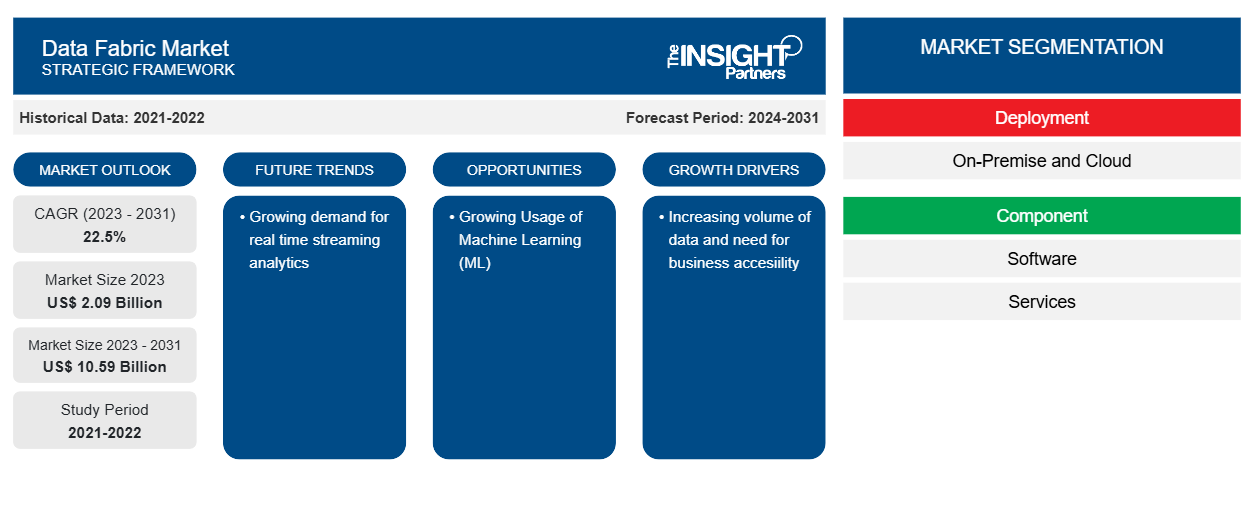数据结构市场预计将从 2023 年的 20.9 亿美元增长到 2031 年的 105.9 亿美元;预计从 2023 年到 2031 年的复合年增长率将达到22.5%。对实时流分析的需求不断增长预计将成为市场的一个主要趋势。
数据结构市场分析
数据结构提供数据虚拟化,使企业能够实现无缝数据访问,同时使每个人都可以访问数据。通过实施数据结构,业务用户可以以最少的 IT 参与访问数据,从而为数据访问和交换提供更快、更轻松的环境。设计良好的逻辑数据结构将基本安全性和数据管理集中起来。因此,预计数据结构市场将在预测期内增长。
数据结构市场行业概览
Data Fabric 是一个全面的数据集成和管理系统,包括架构、数据管理和集成工具以及共享数据,可帮助企业管理其数据。数据结构为组织全球网络的每个成员提供单一、一致的用户体验和实时数据访问。数据结构旨在通过管理跨各种应用程序、平台和位置的数据来帮助企业解决复杂的数据问题和用例。数据结构在分散的数据环境中提供无摩擦访问和数据共享。
定制此报告以满足您的需求
您可以免费定制任何报告,包括本报告的部分内容、国家级分析、Excel 数据包,以及为初创企业和大学提供优惠和折扣
-
获取此报告的关键市场趋势。这个免费样品将包括数据分析,从市场趋势到估计和预测。
数据结构市场驱动因素和机遇
数据量增加有利于市场增长
任何以数据为中心的组织都需要一种综合的方法来解决时间、空间、各种软件类型和数据位置问题。数据必须可供需要它的人使用,而不是隐藏在防火墙后面或分散在多个地方。企业需要一种安全、高效、一致且面向未来的数据解决方案来提高运营效率。因此,预计在预测期内对数据结构的需求将增长。
机器学习 (ML) 的使用日益增多
ML 算法可以监视数据管道并建议相关的链接和集成。这些算法从链接到数据结构的数据中提取信息,审查所有业务数据,并找到相关的联系和相关性。提供数据是训练 ML 模型最耗时的方面之一。数据结构设计通过缩短数据准备时间使 ML 模型更加高效。它还提高了准备好的数据在各种应用程序和模型中的可用性。公司在本地、云端和物联网中分发数据。数据结构可以限制对安全数据的访问并增强 ML 流程。因此,预计 ML 在数据结构中的应用将在预测期内推动市场增长。
数据结构
市场报告细分分析
有助于得出数据结构市场分析的关键部分是部署、组件、解决方案和最终用户的覆盖范围。
- 根据部署方式,市场分为本地部署和云部署。云部署在 2023 年引领市场。
- 根据组件,市场分为软件和服务
- 根据解决方案,市场分为数据发现、数据提取、数据编排、结构数据访问、数据管理和结构管理和
- 根据最终用户,市场分为 BFSI、IT 和电信、零售、医疗保健和制药等
数据结构市场份额按地区分析
根据地区,市场分为北美、欧洲、亚太、中东和非洲、南美和中美。
2023 年,北美地区在数据结构市场中占有重要份额,预计在预测期内将以可观的复合年增长率增长。这种增长可能归因于众多市场参与者的存在和早期采用技术。此外,预计在预测期内,亚太地区的复合年增长率最快。这种增长可能归因于数据中心数量的增加和数字化程度的提高。
数据结构市场区域洞察
Insight Partners 的分析师已详细解释了预测期内影响数据结构市场的区域趋势和因素。本节还讨论了北美、欧洲、亚太地区、中东和非洲以及南美和中美洲的数据结构市场细分和地理位置。

- 获取数据结构市场的区域特定数据
数据结构市场报告范围
| 报告属性 | 细节 |
|---|---|
| 2023 年的市场规模 | 20.9亿美元 |
| 2031 年市场规模 | 105.9亿美元 |
| 全球复合年增长率(2023 - 2031) | 22.5% |
| 史料 | 2021-2022 |
| 预测期 | 2024-2031 |
| 涵盖的领域 |
按部署
|
| 覆盖地区和国家 |
北美
|
| 市场领导者和主要公司简介 |
|
市场参与者密度:了解其对商业动态的影响
数据结构市场正在快速增长,这得益于最终用户需求的不断增长,这些需求源于消费者偏好的不断变化、技术进步以及对产品优势的认识不断提高等因素。随着需求的增加,企业正在扩大其产品范围,进行创新以满足消费者需求,并利用新兴趋势,从而进一步推动市场增长。
市场参与者密度是指在特定市场或行业内运营的企业或公司的分布情况。它表明相对于给定市场空间的规模或总市场价值,有多少竞争对手(市场参与者)存在于该市场空间中。
在数据结构市场运营的主要公司有:
- Denodo技术公司
- IBM 公司
- Informatica 公司
- K2View
- NetApp 公司
- 甲骨文公司
免责声明:上面列出的公司没有按照任何特定顺序排列。

- 获取数据结构市场顶级关键参与者概览
数据结构市场新闻和最新发展
通过收集一手和二手研究后的定性和定量数据来评估数据结构市场,其中包括重要的公司出版物、协会数据和数据库。以下列出了数据结构市场的一些发展情况:
- LigaData 是电信技术领域的领先供应商,它通过推出新的 LigaData Telecom Data Fabric 4.0 和 LigaData Telecom AI Apps 彻底改变了电信数据分析行业。这些新产品使电信运营商和通信服务提供商能够实现其计划,将其业务从传统电信运营商转变为敏捷数据和 AI 驱动的技术公司,同时推动收入增长、保持市场份额并增强客户体验。(来源:LigaData,新闻稿,2024 年 2 月)
数据结构市场报告覆盖范围和交付成果
数据结构市场预测是根据各种二手和一手研究结果估算的,例如主要公司出版物、协会数据和数据库。市场报告“数据结构市场规模和预测(2021-2031 年)”对市场进行了详细分析,涵盖以下领域:
- 数据结构市场规模以及范围涵盖的所有关键细分市场的全球、区域和国家层面的预测
- 数据结构市场趋势以及市场动态,如驱动因素、限制因素和关键机遇
- 详细的 PEST/波特五力分析和 SWOT 分析
- 数据结构市场分析涵盖关键市场趋势、全球和区域框架、主要参与者、法规和最新市场发展
- 行业格局和竞争分析,涵盖市场集中度、热图分析、知名参与者以及数据结构市场的最新发展
- 详细的公司简介。
- 历史分析(2 年)、基准年、预测(7 年)及复合年增长率
- PEST和SWOT分析
- 市场规模、价值/数量 - 全球、区域、国家
- 行业和竞争格局
- Excel 数据集
近期报告
相关报告
客户评价
购买理由
- 明智的决策
- 了解市场动态
- 竞争分析
- 客户洞察
- 市场预测
- 风险规避
- 战略规划
- 投资论证
- 识别新兴市场
- 优化营销策略
- 提升运营效率
- 顺应监管趋势























 获取免费样品 - 数据结构市场
获取免费样品 - 数据结构市场